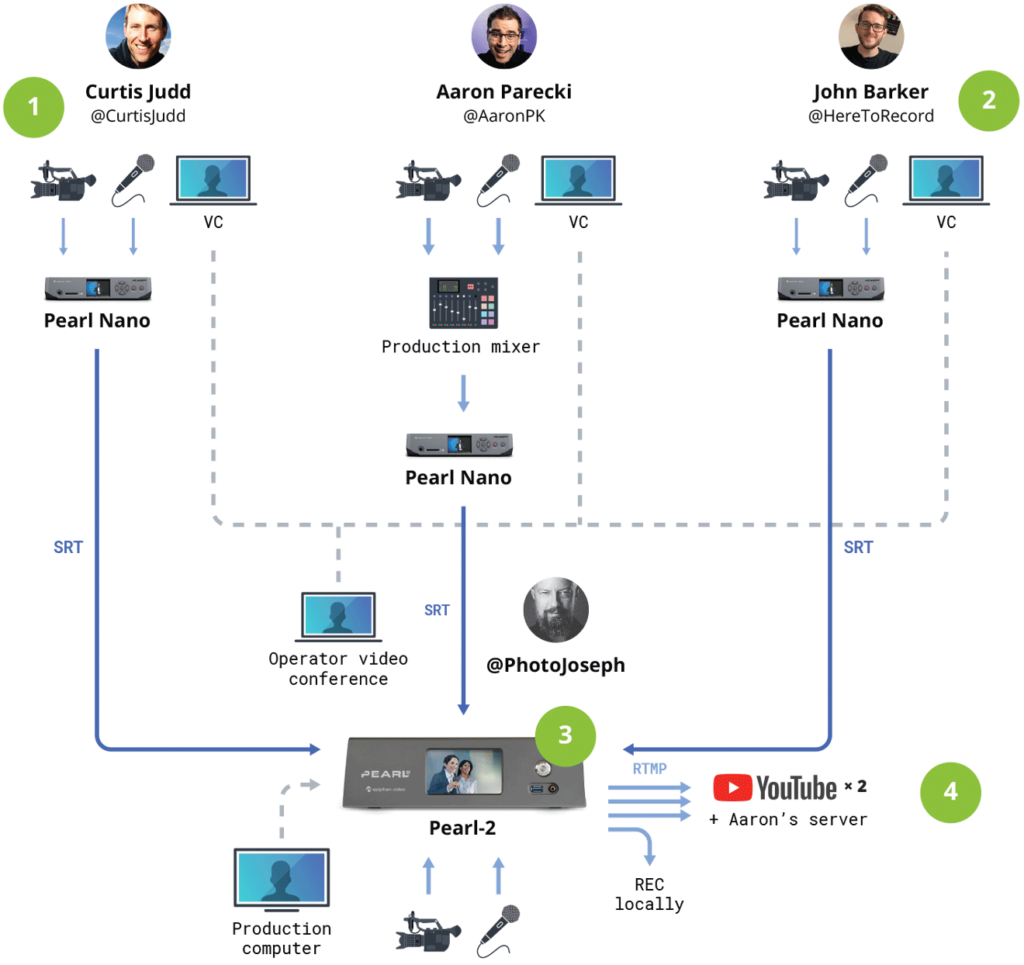Pearl-powered productions: Putting SRT remote contribution to the test
By Jamie G
Live streaming experts Aaron Parecki, John Barker, Curtis Judd, and PhotoJoseph recently put SRT remote contribution to the test with Epiphan’s Pearl-2 and Pearl Nano. SRT delivers high-quality video and audio with low latency over the unreliable public Internet.
To test this, Parecki, Baker, and Judd contributed an audio and video feed from their local Pearl Nano to PhotoJoseph’s Pearl-2 production encoder. All of them were doing this from all over the globe, and the main goal was to bring them in together on a single live stream.

Epiphan says…
- Each participant had a professional camera and microphone connected directly to their Pearl or through a production switcher.
- Because SRT is best suited for one-way video contribution rather than two-way communication, the team used video conferencing (VC) software for real-time communication.
- PhotoJoseph’s Pearl-2 served as the central production hub, receiving all SRT feeds and recording and streaming. During the event, he swapped between layouts on the fly with Pearl-2’s live switching capabilities.
- PhotoJoseph was streaming from Pearl-2 directly to two of his own YouTube channels. An additional RTMP stream was going from Pearl-2 to Aaron’s home gigabit network server for restreaming to the other participants’ YouTube channels.
The test resulted in high quality, low-latency streaming! Epiphan says “Even though the four participants were thousands of miles apart, they achieved sub-second latency via SRT. Measured with relation to PhotoJoseph, Aaron came in 0.46 seconds behind, Curtis was at 0.72 seconds, and John’s streaming latency was 0.87 seconds. These results are even more impressive when you consider that John was streaming from a remote rural area in Sweden using an unpredictable 4G connection.”
Curtis Judd shared the whole thing on his YouTube channel. Check it out!
Check out the full article here!
Check out the video on Judd’s YouTube here!
Learn more about Epiphan here!

